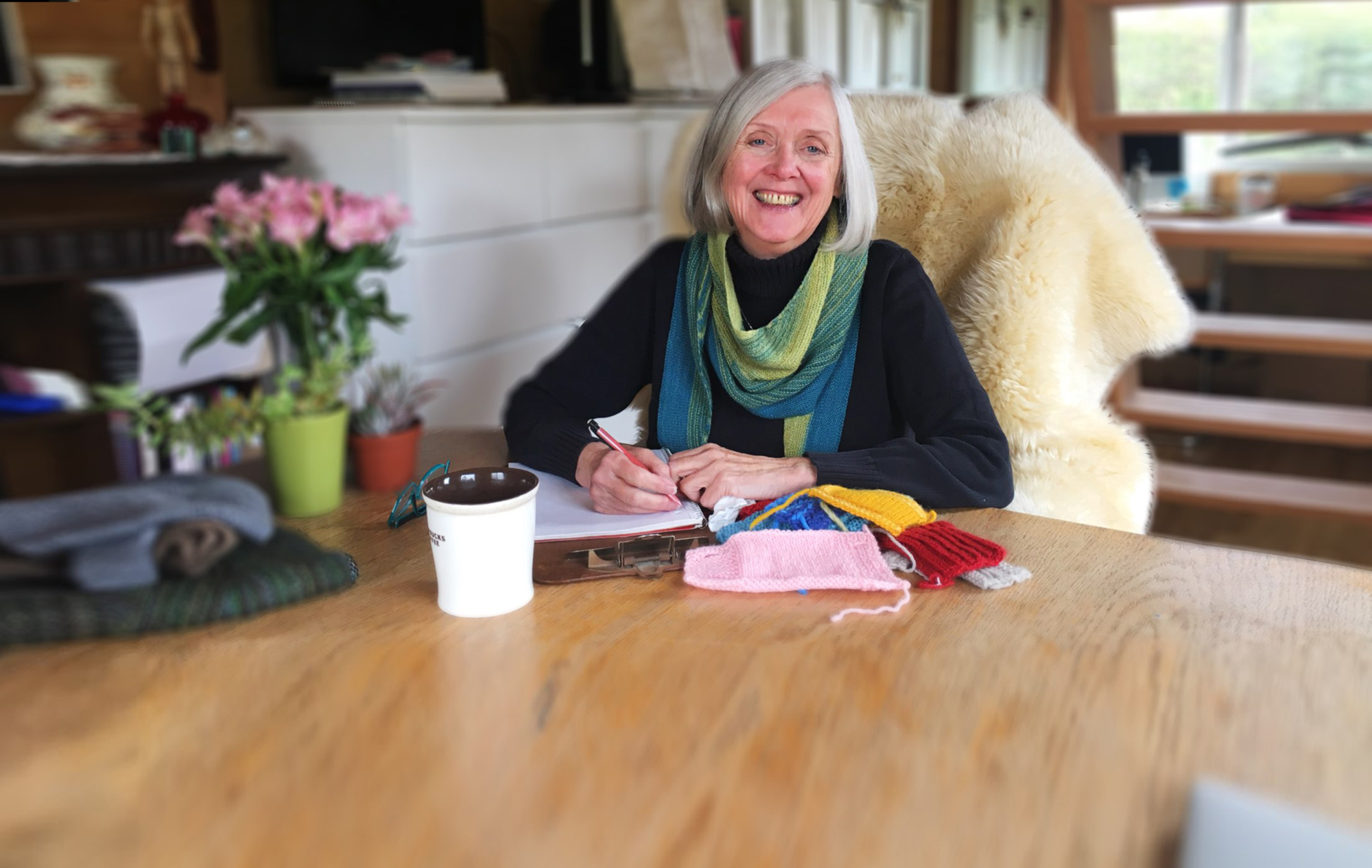We’re getting toward the end (pun intended) of our exploration of cast-ons and bind-offs you really should know about. Here are two.
THE CABLE CAST-ON
The Cable Cast-On is like the Lace Cast-On in that they both are knitted on, but what different characters they are! The Cable Cast-On is durable and rope-like, not at all stretchy, and you can use it to add stitches in the middle of a piece of knitting. It’s the second one I ever learned and Lena (my Ma) would consider it an essential tool for your knitting bag.
THE PROVISIONAL CAST-ON
The Provisional Cast-On is just a holder for live stitches until you can get back to them and join them to other (usually live) stitches. This allows you to do things like knit a lace scarf with a fancy finishing edge in separate halves, from the middle toward the ends, and then join them. That way the scarf is symmetrical, the ends identical. There are a number of ways to hold these stitches provisionally, but I like this method because it’s “sturdy” compared to some other techniques.
Any thoughts you want to share? I always like that.

I purchased Sweater 101. I am slowly going through the book and absorbing the information. I am still trying to understand the guage. I will get it eventually. Thank you so much for your videos and sharing your knowledge of knitting.
You aren’t the only one who has difficulty understanding gauge at first Karen. If you persevere, however, I’m confident you’ll have a happy “aha moment” that will make you a much stronger knitter.
I am learning so much from you!
Thank you for sharing your wealth of information. As a newbie knitter with only the internet as a teacher, I’m so happy I found you.
Cheryl,
Thanks so much for the awesome tutorials, I especially loved the tubular cast on and bind off!! I am very to knew to knitting! There is sooo much to remember!! At 60+ its not as easy to remember…oh well… I am wondering about the provisional cast on though, as the join seems beautiful the edges …not so much; so shouldn’t this be considered too or just used in certain applications where the edges are seamed using a certain application? In the example you used with the scarf I’m wondering if the edge wouldn’t show this to some degree, or am I correct in thinking its just a trade off?
You’re right, for example, that if you knit two symmetrical halves from the middle and join them, they will be 1/2 stitch offset. That’s where you fudge a bit with your tapestry needled to “make it look good.” When you consider the size of a scarf, for example, it’s unlikely that anyone would notice that detail unless she or he were an expert knitter and judging at the county fair, particularly if it were a lace pattern.
It’s an excellent question. That you are a new knitter and already anticipating how you will finish a piece given the techniques you choose is a pretty sophisticated understanding of the overall process. Bravo!
love your videos…so helpful
Thank you Karen. And Happy New Year.
instructions, visuals and your verbal instructions…all top notch. Thanks so much.
You are so welcome Marian. Thanks for commenting.
Thanks!
That is really useful information and very clearly explained.
Karen.
I have modified the cable cast by starting with two slip knots which are dropped off the needle when knitting back on the first row. This gives a nicely square corner to the knitting and gets rid of those knots.
Thanks Lilly. I’ll have to try this.
I use provisional cast on often and do it just a bit differently. I create my crochet chain around a knitting needle. There is no pesky picking up from a chain with chances of catching the wrong loop or splitting the yarn of the chain. By crocheting the chain onto a needle directly the release of the chain later is an easy zip out. Another trick is to add another contrasting thread along the needle as you crochet around the needle. When you zip out the crochet stitches, the contrasting thread holds the ‘live’ stitches making it easy to mount them on the needle to finish your work.
Thanks for this tip Sue. I’ve used that crochet over the needle cast on before as well but I hadn’t thought to include a lifeline.
Gracias Cheryl por compartir tus prácticas y conocimientos.
De nada. Gracias por commenting.
Dear Cheryl,
The more I learn about knitting from you the more I enjoy it. I will of course put this email in my Cheryl file 🙂 . Thanks for making my Sunday morning a bit nicer.
Fond regards from Cologne.